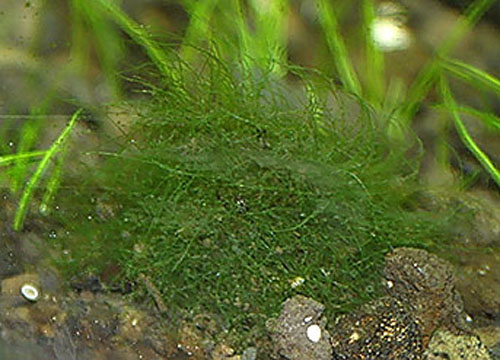Algae – Hair/Thread & Cladophora
February 29th, 2008At the last GWAPA meeting, I gave a presentation called Algae in the Planted Aquarium. While preparing for the presentation, I had to gather a lot of information from a number of different sources on the Internet. I’ve decided to declare this week Algae Week, and share that gathered information by posting about two types of algae each day. This is the final installment featuring Hair/Thread Algae & Cladophora.
Hair/Thread Algae

Hair/Thread Algae consists of long green filaments reaching as long as 30cm in length. It often mixes itself in among moss, and is sometimes grown purposely as an extra food supplement for tank inhabitants.
Cause:
- Excess iron levels – Concentrations >0.15ppm
Cure:
- Manual removal – Use toothbrush to remove as much as possible.
- Maintain proper water change schedule – weekly / bi-weekly changes.
- Rebalance Nutrients – Strive for the following nutrient levels: N (10-20ppm), P (0.5-2ppm), K (10-20ppm), Ca (10-30ppm), Mg (2-5ppm), Fe (.1ppm).
Cladophora

Cladophora is by far the toughest algae to remove from the aquarium. Forming green, tough, wool-like mats, it seems to favor intermingling itself into hairgrass, substrate, and hardscape items.
Causes:
- Marimo Balls – Being in the same family as these algae balls, they can sometimes introduce Cladophora to your aquarium.
- Healthy Conditions – Unfortunately, Cladophora seems to favor the same healthy water conditions that your plants require.
Cure:
- Manual removal – Use toothbrush/tweezers to remove as much as possible.
- Excel/H202 treatment – Use a syringe to spot treat problem areas.
- Luck – Very difficult to 100% remove.
Sources:

























